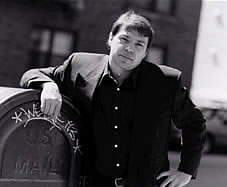|
I'm so incredibly proud of my 15th book for young adults. The idea behind it is wonderfully simple. In every school I visit, I hear students debating one another about the G.O.A.T. You know the acronym–The Greatest of All-Time. It's everywhere these days, permeating nearly every aspect of our society. Both high school and middle school students are completely zoned in on it, and totally obsessed. Why? Because the question values their opinion and elevates the speaker in importance. It gives teens the floor for a moment and lets their voices be heard. The categories are never ending. I've chosen a number of high interest ones for inclusion in my text: Who's the greatest basketball player of all time? Greatest rapper? Greatest video game? Greatest sci-fi franchise? Greatest rock band? But while readers are investigating their favorite categories, they'll also be exposed to these unexpected debates: Who's the greatest scientist of all time? Greatest architect? Greatest philosopher? Greatest mathematician? Greatest chess player? Greatest jazz soloist? Greatest composer? Greatest writer? The text also teaches students the basic strategies of debate and how to put forth a strong argument for their candidate as the G.O.A.T of a particular category. The initial response to this book has been amazing, including from classroom teachers who are using it to teach their students about how to form an argument while encouraging spirited classroom debates.
I knew this text would also inspire various classroom projects, and I've been contacted by dozens of teachers asking about my own ideas. Here are a trio of my favorites. I'd love to hear about yours:
-
Each of my categories discusses two possible candidates for the G.O.A.T. Students will undoubtedly believe that they have a better candidate who was not presented by me. It's a great opportunity for a student to research their own candidate and make a presentation to the class.
-
Think about creating a new Mt. Rushmore. Maybe a genre-specific one for sports, music, science or literature. Students can vote for their favorite candidates. When four representatives are decided upon, students who excel at art might draw their faces side-by-side on a mountain, while students with computer skills might bring their images together from the internet.
-
In a mock courtroom setting, a pair of students acting as litigators can present my two choices for each category in front of a classroom jury before a vote is taken to determine the winner. Either a teacher or a student can preside over the proceedings as the classroom debate judge.
|

